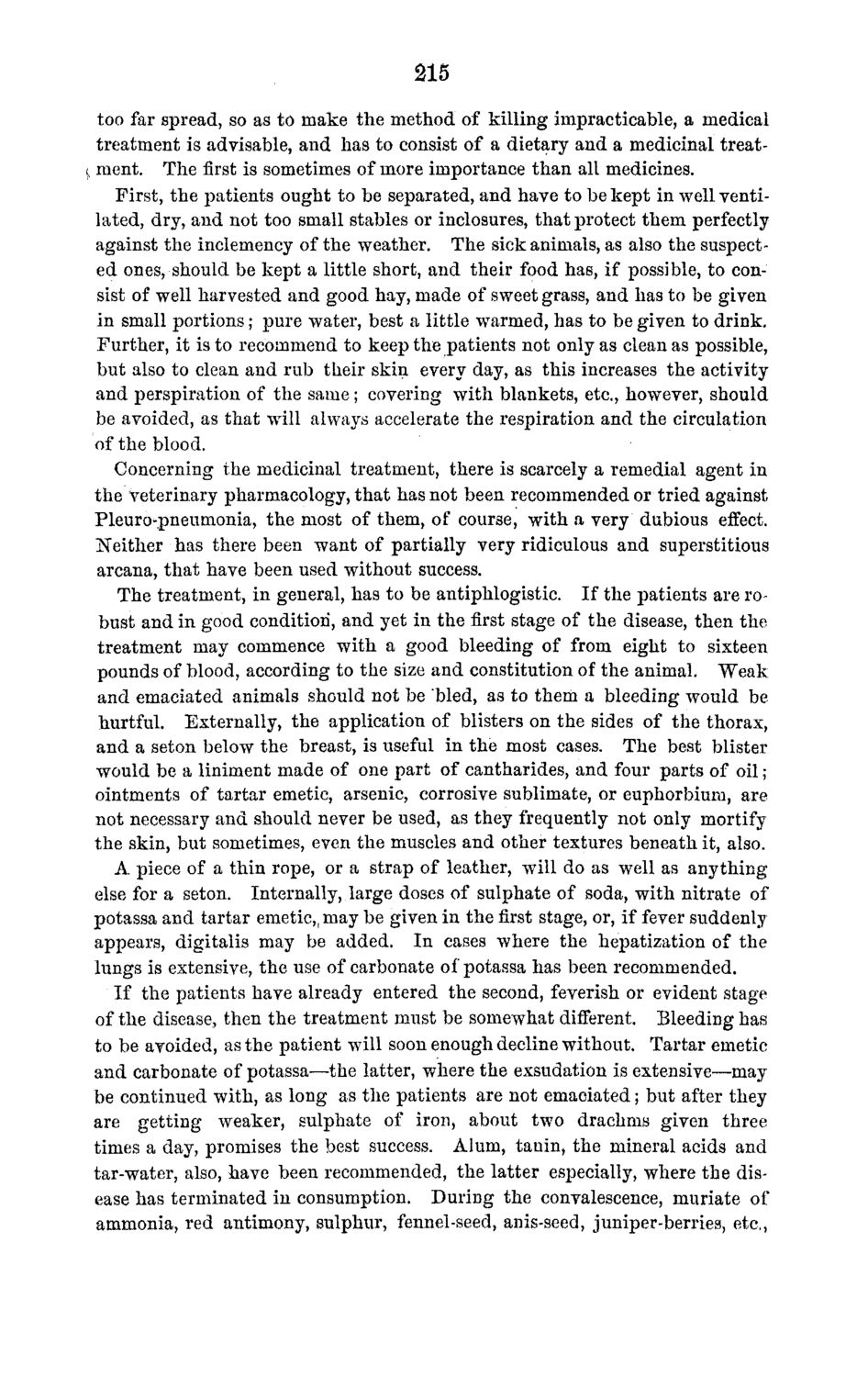| |
| |
Caption: Board of Trustees Minutes - 1870
This is a reduced-resolution page image for fast online browsing.

EXTRACTED TEXT FROM PAGE:
215 too far spread, so as to make the method of killing impracticable, a medical treatment is advisable, and has to consist of a dietary and a medicinal treat^ ment. The first is sometimes of more importance than all medicines. First, the patients ought to be separated, and have to be kept in well ventilated, dry, and not too small stables or inclosures, that protect them perfectly against the inclemency of the weather. The sick animals, as also the suspected ones, should be kept a little short, and their food has, if possible, to consist of well harvested and good hay, made of sweet grass, and has to be given in small portions; pure water, best a little warmed, has to be given to drink. Further, it is to recommend to keep the patients not only as clean as possible, but also to clean and rub their skin every day, as this increases the activity and perspiration of the same; covering with blankets, etc., however, should be avoided, as that will always accelerate the respiration and the circulation of the blood. Concerning the medicinal treatment, there is scarcely a remedial agent in the veterinary pharmacology, that has not been recommended or tried against Pleuro-pneumonia, the most of them, of course, with a very dubious effect. Keither has there been want of partially very ridiculous and superstitious arcana, that have been used without success. The treatment, in general, has to be antiphlogistic. If the patients are robust and in good condition, and yet in the first stage of the disease, then the treatment may commence with a good bleeding of from eight to sixteen pounds of blood, according to the size and constitution of the animal. Weak and emaciated animals should not be "bled, as to them a bleeding would be hurtful. Externally, the application of blisters on the sides of the thorax, and a seton below the breast, is useful in the most cases. The best blister would be a liniment made of one part of cantharides, and four parts of oil; ointments of tartar emetic, arsenic, corrosive sublimate, or euphorbium, are not necessary and should never be used, as they frequently not only mortify the skin, but sometimes, even the muscles and other textures beneath it, also. A piece of a thin rope, or a strap of leather, will do as well as anything else for a seton. Internally, large doses of sulphate of soda, with nitrate of potassa and tartar emetic,, may be given in the first stage, or, if fever suddenly appears, digitalis may be added. In cases where the hepatization of the lungs is extensive, the use of carbonate of potassa has been recommended. If the patients have already entered the second, feverish or evident stage of the disease, then the treatment must be somewhat different. Bleeding has to be avoided, as the patient will soon enough decline without. Tartar emetic and carbonate of potassa—the latter, where the exsudation is extensive—may be continued with, as long as the patients are not emaciated; but after they are getting weaker, sulphate of iron, about two drachms given three times a day, promises the best success. Alum, tanin, the mineral acids and tar-water, also, have been recommended, the latter especially, where the disease has terminated in consumption. During the convalescence, muriate of ammonia, red antimony, sulphur, fennel-seed, anis-seed, juniper-berries, etc.,
| |